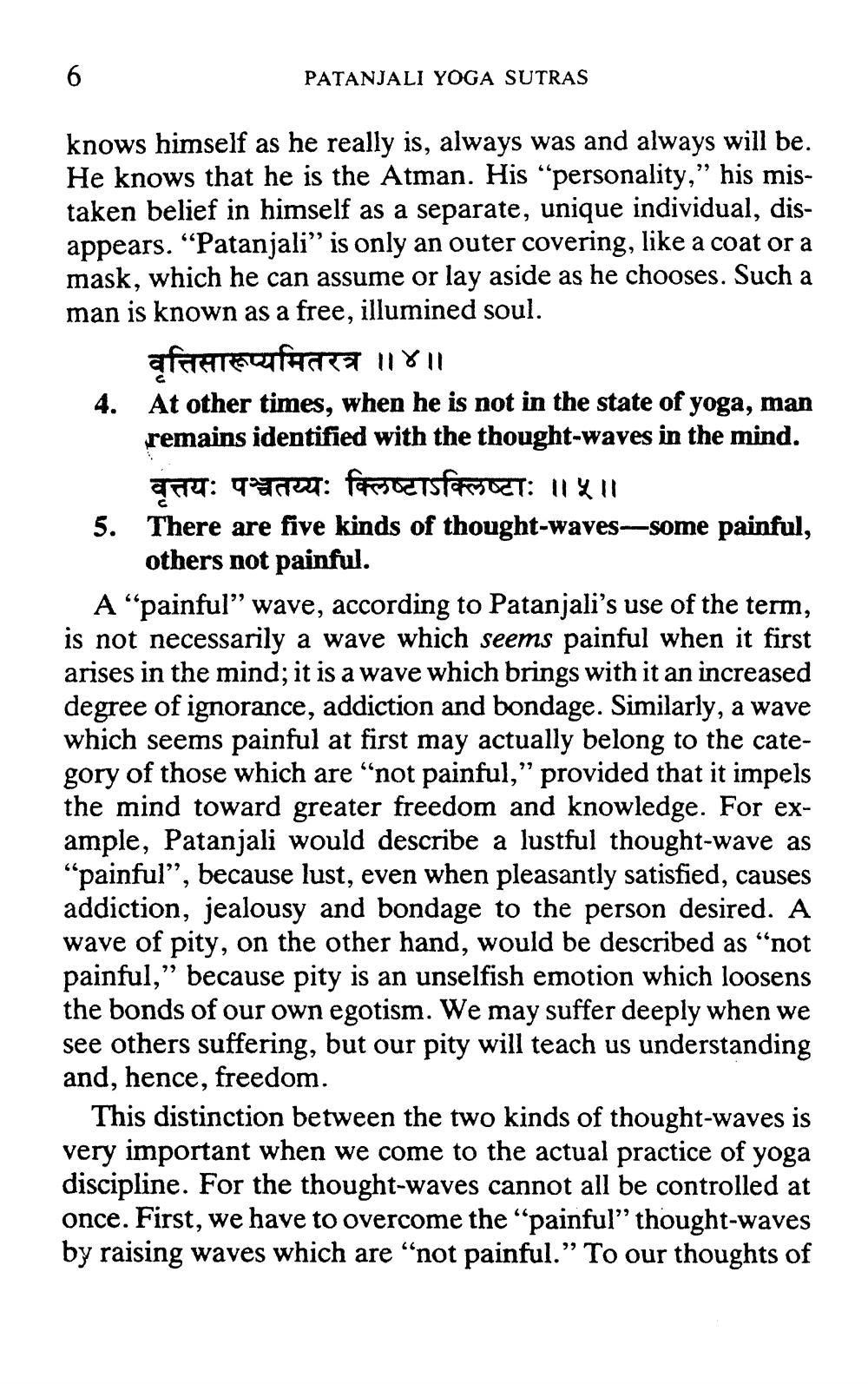________________
PATANJALI YOGA SUTRAS
knows himself as he really is, always was and always will be. He knows that he is the Atman. His “personality,” his mistaken belief in himself as a separate, unique individual, disappears. “Patanjali" is only an outer covering, like a coat or a mask, which he can assume or lay aside as he chooses. Such a man is known as a free, illumined soul.
वृत्तिसारूप्यमितरत्र ॥४॥ 4. At other times, when he is not in the state of yoga, man
remains identified with the thought-waves in the mind.
वृत्तयः पञ्चतय्यः क्लिष्टाऽक्लिष्टाः ॥५॥ 5. There are five kinds of thought-waves--some painful,
others not painful. A "painful" wave, according to Patanjali's use of the term, is not necessarily a wave which seems painful when it first arises in the mind; it is a wave which brings with it an increased degree of ignorance, addiction and bondage. Similarly, a wave which seems painful at first may actually belong to the category of those which are “not painful,” provided that it impels the mind toward greater freedom and knowledge. For example, Patanjali would describe a lustful thought-wave as "painful”, because lust, even when pleasantly satisfied, causes addiction, jealousy and bondage to the person desired. A wave of pity, on the other hand, would be described as “not painful,” because pity is an unselfish emotion which loosens the bonds of our own egotism. We may suffer deeply when we see others suffering, but our pity will teach us understanding and, hence, freedom.
This distinction between the two kinds of thought-waves is very important when we come to the actual practice of yoga discipline. For the thought-waves cannot all be controlled at once. First, we have to overcome the painful” thought-waves by raising waves which are “not painful.” To our thoughts of




